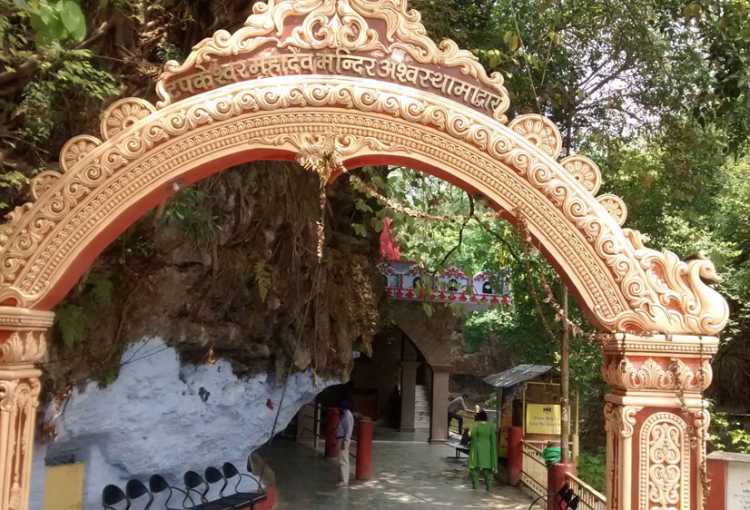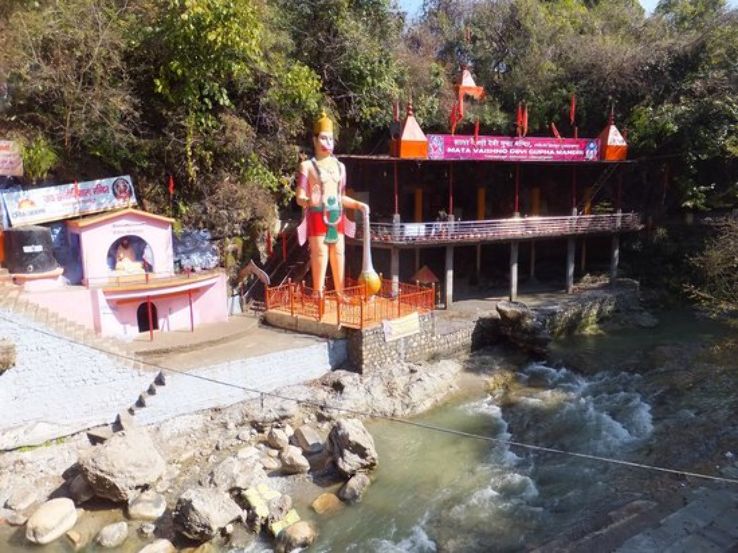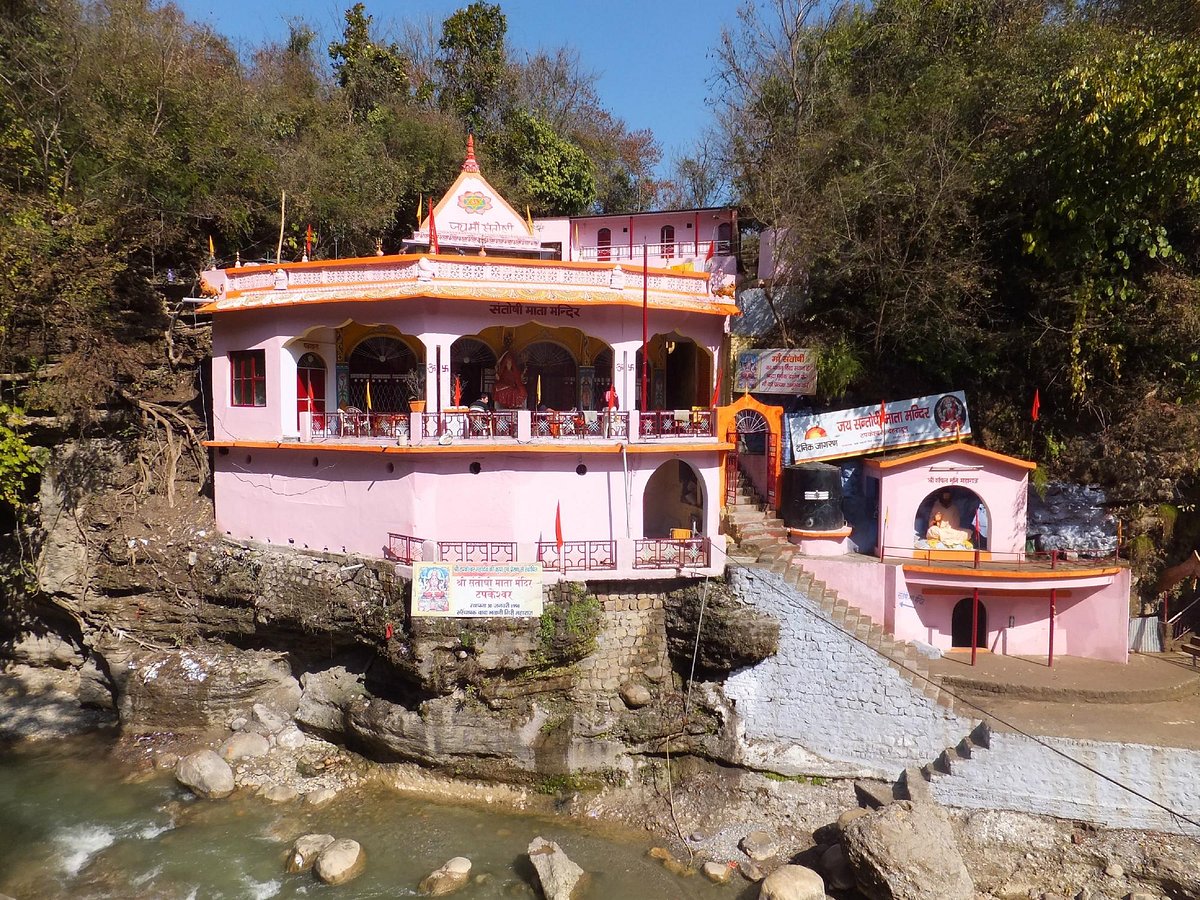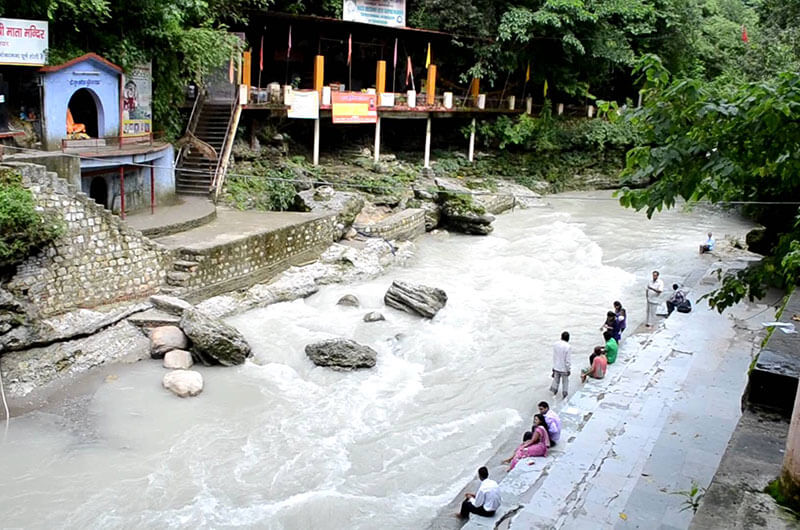Introduction to Tapkeshwar Temple
The capital of Uttarakhand, Dehradun, is a stunning city that would enchant anyone with its tranquil beauty and abundance of natural beauty. The city is home to numerous beautiful parks, temples, and other wonderful locations. The Drona Cave is a tiny, drippy cave that houses an interesting and well-known Shiva shrine in the picturesque Tons River valley. The Tapkeshwar temple is devoted to Lord Shiva, and all year long it is crowded with his devoted followers.
Due to the Shivlinga’s ability to be seen with water dripping on it, the temple was given the name Tapkeshwar. Old and charming in a rustic way is the Tapkeshwar Mahadev temple.
The water makes the temple much more beautiful. A very precious and beloved temple, this charming cave temple is located in the cantonment district of Garhi in the center of the city and draws thousands of tourists and devotees. The temple’s distinctive structural layout is quite visually pleasing. The presence of this temple is the subject of an intriguing tale. This temple is thought to have existed during the time of the Mahabharata.

A common belief is that the guru Drona of the Pandavas and Kauravas meditated in this cave with the blessings of Lord Shiva in order to gain knowledge and competence in military techniques like archery. Ashwathama, the son of Guru Dronacharya and his wife Kripi, was born here, and thanks to Lord Shiva’s powers, milk began to stream from the cave for Ashwathama, who desperately needed it. The temple has a holy aura thanks to the mythological tales that surround it.
Tapkeshwar Temple Mythology
A well-known cave temple dedicated to Lord Shiva can be found near Dehradun, the state capital of Uttarakhand, at Tapkeshwar Temple. Tapkeshwar Mahadev Temple is another name for Tapkeshwar Temple. Its unusual name Tapkeshwar is a combination of the Hindi words Tapak, which means “dripping,” and Eshwar, which means “God.” It is a Lord Shiva cave temple.
This actually alludes to the water that naturally drips upon the Shivling that is installed inside the cave from the cave’s ceiling. It is a “Swayambhu,” or a Shivling that naturally exists. The “Shivalinga” is covered with water droplets, which creates a wonderful atmosphere brimming with heavenly tranquility. A natural cave housing the Tapkeshwar Shiv Temple may be found close to the Tons River.

A branch of the Yamuna River that travels through the Garhwal region is the Tons River. Tamsa was the name of a river in the Mahabharata era. Devdhara was another name for it. On the Tons River, a short bridge is available for crossing to the opposite bank. This river’s water level drops over the summer. However, during the rainy season, the river level rises so much that the majority of the temple is submerged.
You can bathe in the Tons River year-round, not just during the rainy season. Shiv worshippers frequently bathe at the Tons River before going for Shiv Darshan. The River is home to a large number of fish. This is where you can feed them. Additionally, food for fish is offered here. Near the temple, there are additional sulfur-water springs. Because Guru Dronacharya performed his tapasya here, this cave is also known as “Dron Cave.” The cave is traversed by the Asan River, a tributary of the Yamuna.
The Shiva Linga in the Drona cave, where drops are falling over it and disappearing into the ground, can be seen from a distance as a stream attracts the travelers, and there is a cool Sulphur water spring in the temple where the pilgrims can take a bath before entering the temple, make Tapkeshwar Mahadev Mandir popular because of its picturesque location between two hills. In close proximity to the temple is a cave dedicated to Goddess Santoshi.
On the holy date of Shivratri, a sizable fair is annually held, drawing a big crowd of city residents who attend to celebrate and offer their respects to Lord Shiva. A lot of rituals are performed for the deity on this night. Flowers, water, and many other items are brought to the Lord as offerings by devotees who gather the natural water as prashad and consume it as a holy gift. In order to visit this location on this day, you must arrive as early as possible in the morning.
Separately, there will be a long line of worshippers made up of both men and women. During this festival, a variety of shops are set up. There will be many kinds of jhula for children and teenagers. Many stores will be selling Bhang laddu, Bhang sharbat, Bhang Pakode, etc. during this event. During this festival, you can also find Kandamool fruit. The temple committee organizes free meals and prasad distributions for all worshippers during Mahashivratri.
Since there are thick woodlands on all sides of the temple, it requires a one-kilometer trek to get there. In addition to Lord Shiva, this location is home to numerous other gods and goddesses’ idols. This temple also contains a Shivling built of 5151 Rudrakshas. Since 6000 years ago, Tapkeshwar Shivling has also been described in Skanda Purana Kedar Khand.
Architecture of Tapkeshwar Temple Dehradun
The Tapkeshwar Temple is a delicate fusion of artificial and organic design. It is nestled between two gentle hills, and the main sanctuary is enclosed within the confines of a cave that was formed naturally. The building itself is a modest structure with a straightforward and diminutive exterior that adheres to traditional Hindu design.

The Shiva Linga inside the cave, which is constantly being drenched by water droplets that fall inside the cave, is the most magnificent sight to behold at this temple. It’s interesting to note that the water droplets disappear from view and can be seen a few yards outside the temple grounds. Tapkeshwar Temple is known as the “land of many miracles” because of this and numerous other paranormal events.
History of Tapkeshwar Temple Dehradun
Gods and goddesses have worshipped Mahadev in this cave from the beginning of existence, during the Age of Truth. And when Lord Shiva was pleased with one of his devotees, he would show himself here in a variety of forms. Similar to this, during the Dwapar Yug, when Lord Krishna lived, a great sage by the name of Dronacharya performed an extremely rigorous and arduous prayer for 12 years in order to make the deity Mahadev pleased by giving him some particular tips, techniques, and knowledge regarding archery.

He is the only Pandav Guru who fought for the truth of the victor in the greatest epic in human history, the Mahabharata. Before the Mahabharata era, Lord Shiva arrived and expressed his satisfaction with Guru Dronacharya’s penance. In response to Guru Drona’s plea, Lord Shiva was constructed as a Linga for the benefit of all living things. Dronacharya afterward worshipped Shiva, and Ashwatthama was born.
The regal Guru of the Pandavas and Kauravas, Guru Dornacharya, is said to have resided in these caverns according to the Mahabharata epic. Thus, the caverns in this location are known as Drona caves. After giving birth to their son Ashwathama, Dronacharya’s wife was unable to breastfeed him. Ashwathama fervently prayed to Lord Shiva by standing on one leg for six months in the cave of the temple, and when the Lord arrived, he asked him for milk because Guru Dronacharya did not have the luxury of purchasing a cow or cow’s milk.
The stream of milk began to flow after the Lord carved cow udders into the rock above the Shivling. Due to this, Lord Shiva’s name changed to Dudheshwar. According to Digambar Bharat Giri Maharaj of the Tapkeshwar Mahadev Temple, Mahadev is dressed as Dudheshwar on the day of the full moon. because Ashwatthama saw Mahadev on this day. The milky stream changed into the water in Kaliyuga and is still falling continually on the Shivling.
The location was given the name Tapkeshwar as a result. In Dehradun, there are numerous Shiva temples, including Shri Prakasheshwar Mahadev Mandir. Because it dates back to the Mahabharata era, Dehradun’s Tapkeshwar temple is known as the Prachin Shiv Mandir. The Hindi word “prachin” is used to describe exceedingly old and antique items. The names Deveshwar and Tapakeshwar are used in the Kund Puran Kedar section to describe Shri Tapakeshwar Shivling. Therefore, it is estimated that this temple is roughly 6,000 years old.
How to reach Tapkeshwar Temple Dehradun?
By Air:
Jolly Grant Airport is the sole airport serving Dehradun. The exact distance from the Jolly Grant Airport to the Tapkeshwar Mahadev Temple is 32 kilometers. To get there, you can get a car from one of the best rental car agencies in Dehradun.
By Road:
Since the temple is only 6 to 7 km away from Dehradun city, you can take a taxi or cab from the city that will transport you directly to a local bus departing for Garhi Cantt from ISBT or Clock Tower.
By Train:
The Tapkeshwar Temple is around 7.5 kilometers from the Dehradun train station. The city bus to Garhi Cantt can be hopped on fast. The railway station to the temple can easily be reached by cab.

